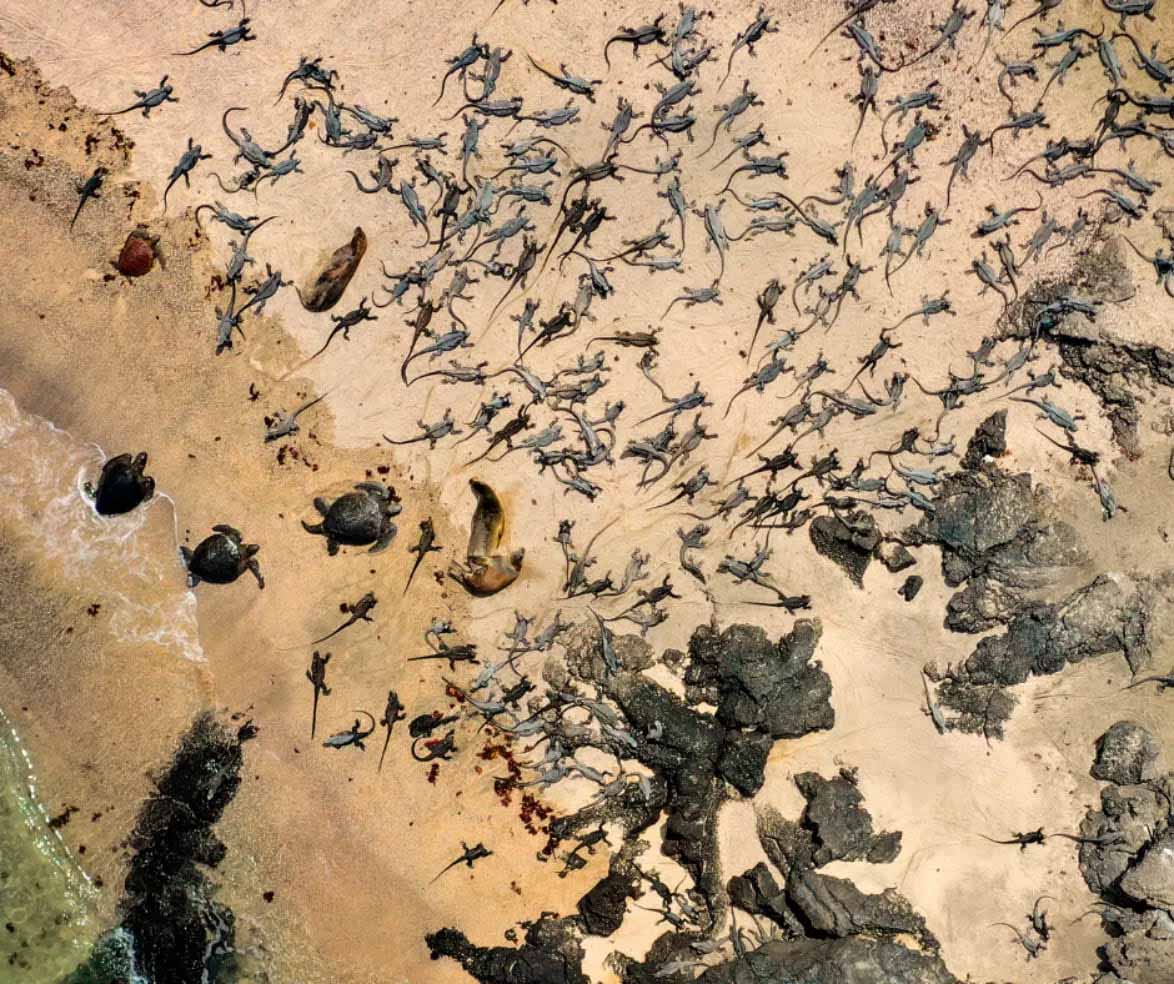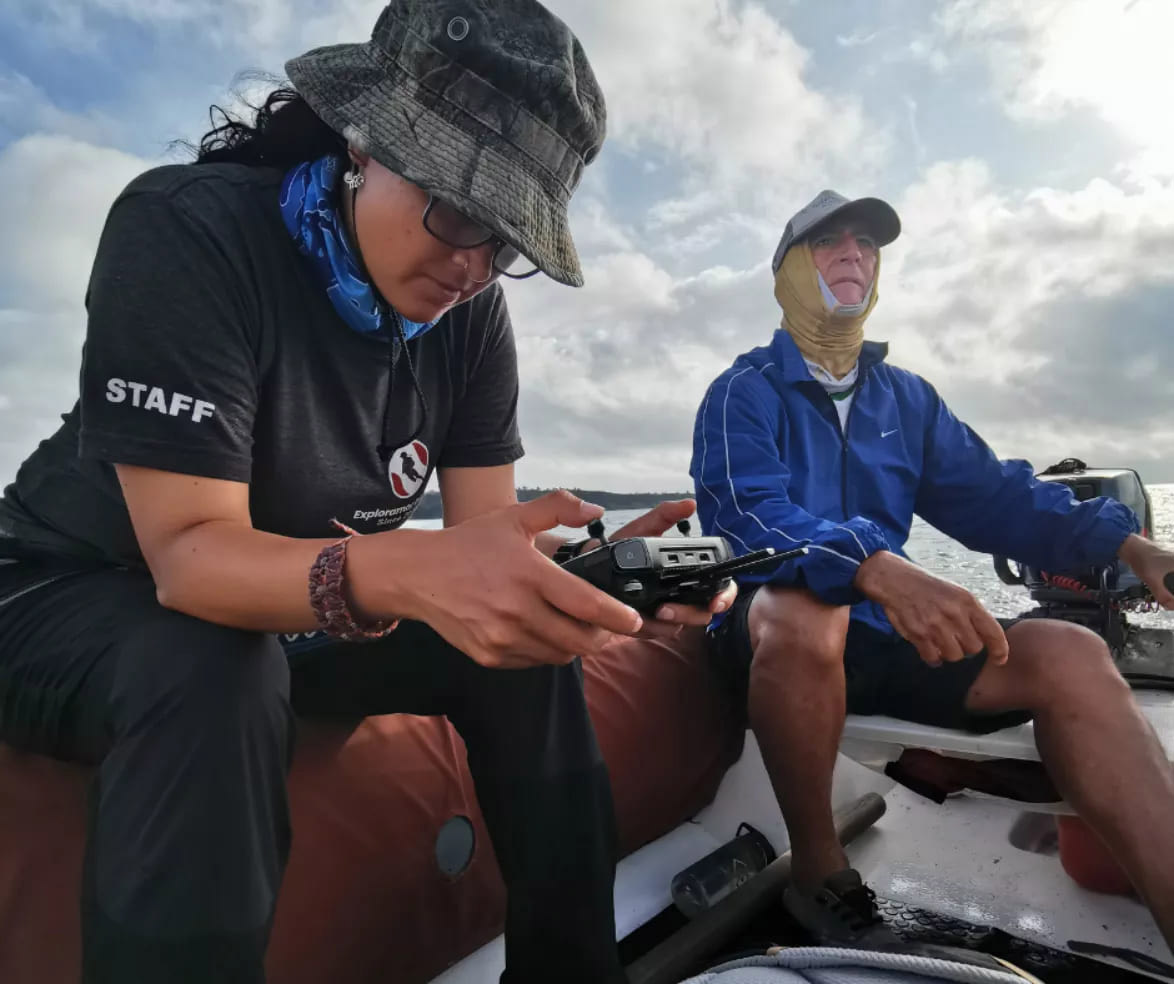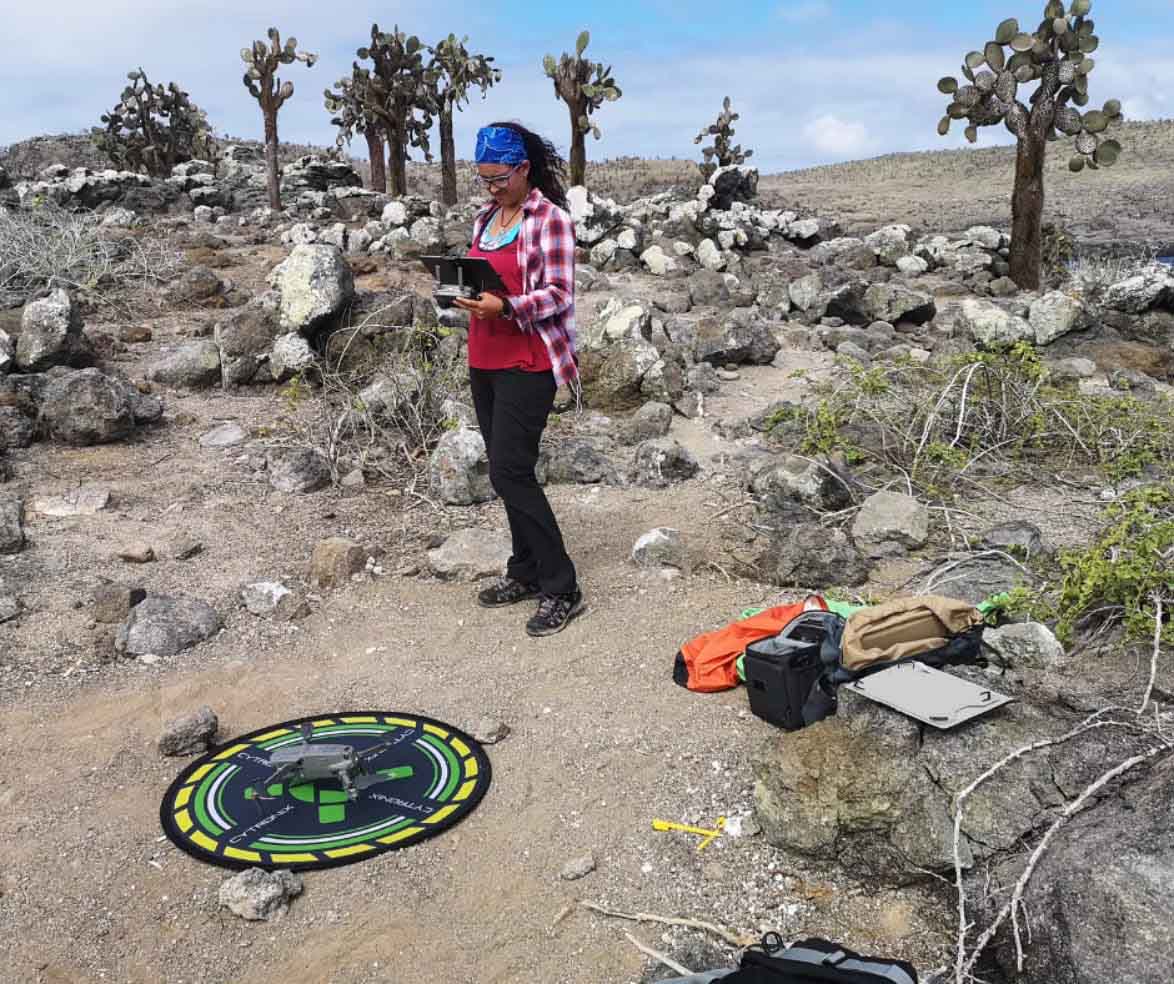Andrea Varela from the Iguanas From Above project discusses her experience researching the iconic marine iguana with cutting-edge technology.
Can you give a brief overview of the Iguanas from Above project and what you hope to achieve?
The Iguanas from Above project began its pilot field phase in 2020, using drones as an innovative and non-invasive method to monitor colonies of the Galapagos marine iguana. Over four years, annual field trips during the iguanas' reproductive season allowed for capturing aerial images across the entire Archipelago. The project also employs citizen science methodologies, involving volunteers worldwide in data analysis by counting marine iguanas in drone images. The primary goal is to gather comprehensive, up-to-date data on marine iguana colonies to estimate population sizes and prioritize conservation efforts. This project is a collaboration between the University of Leipzig, the Galapagos Science Center, and the Galapagos National Park Directorate.

What challenges have you faced when surveying marine iguana populations and how can technology be used to overcome them?
Surveying marine iguana populations in the Galapagos is challenging due to the remote and difficult-to-access nature of many islands, where iguanas often live on inaccessible cliffs surrounded by rough seas. Traditional visual counts, conducted by walking through colonies, are limited in accurately counting these colonies. Technological advances, such as drones, have overcome these challenges by allowing data collection from boats, eliminating the need to visit colonies on land. This method is faster, enabling the monitoring of entire coastlines of several islands, an unthinkable achievement with traditional methods.

What is citizen science and how are you using it to conserve marine iguana populations?
Citizen science involves non-scientific volunteers in collecting and analyzing data for research projects. The Iguanas from Above project is part of Zooniverse.org, the largest online platform for citizen science projects. Volunteers classify images by identifying and counting marine iguanas, significantly speeding up data processing. This support allows for quicker marine iguana counts than the research team alone could achieve. Additionally, volunteers engage in broader conservation discussions, helping to protect marine iguanas and the many other species in the Galapagos.

What’s one piece of advice you would give to someone just starting their career in conservation?
Seize opportunities and maintain persistence. Conservation work can be challenging but highly rewarding. Create opportunities by connecting with leaders in conservation projects or organizations that interest you, improving your chances for future projects or jobs. Attend events to share experiences, build connections, and engage in meaningful discussions.

What is your favourite Galapagos species and why?
Besides the marine iguana, my favorite Galapagos species is the Galapagos penguin. They are the most northerly occurring penguin species in the world, and I find them special. My encounters with them while snorkeling have been enjoyable, and I am impressed by their graceful movement through the water. I appreciate the conservation efforts to protect this endangered species and hope their populations will recover.
